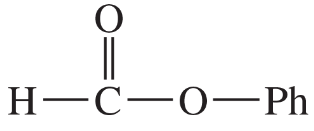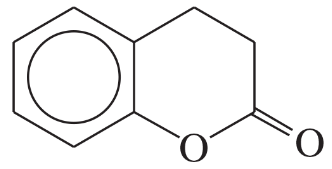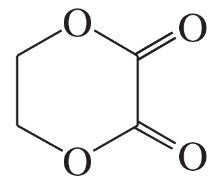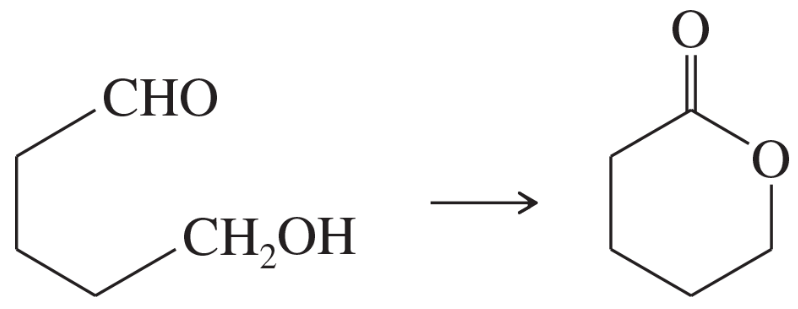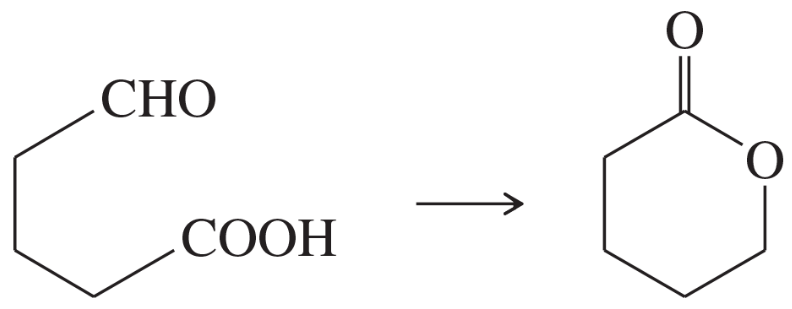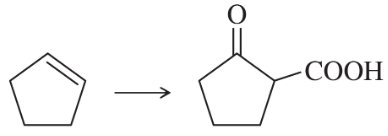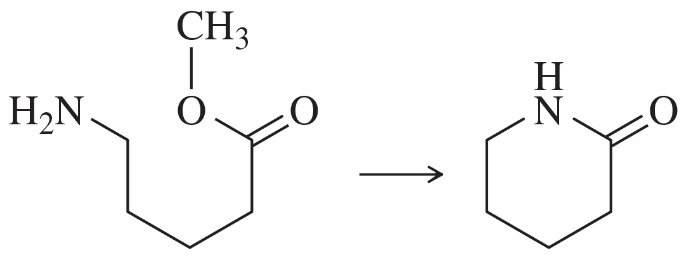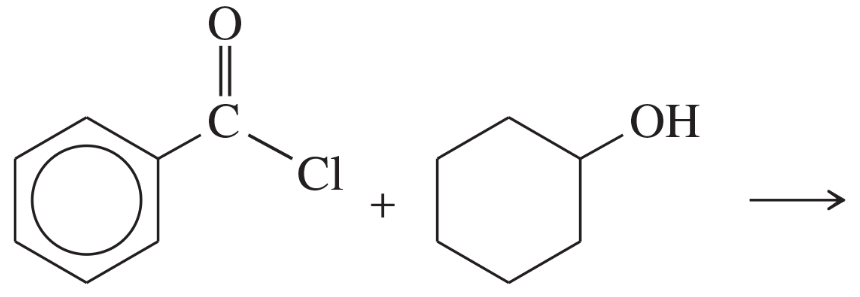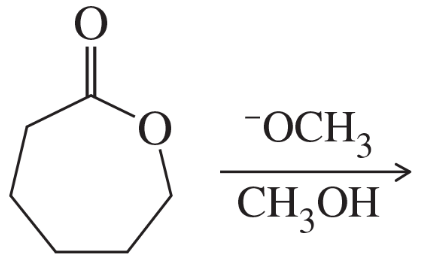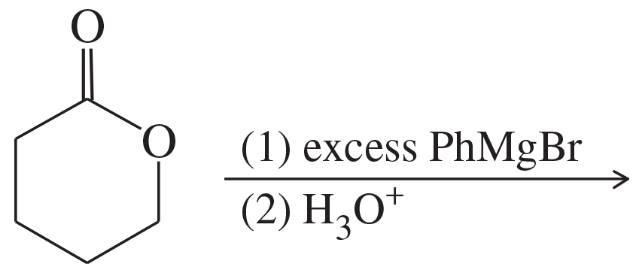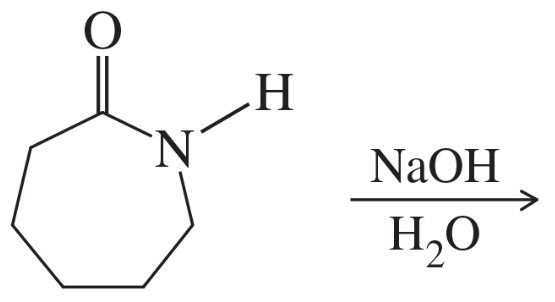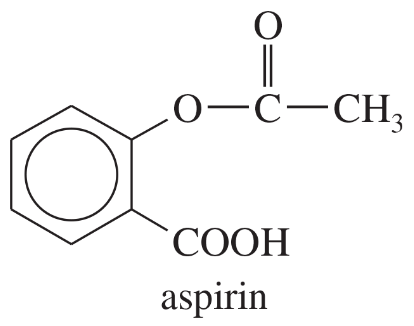 Back
BackProblem 47a
Predict the products of saponification of the following esters.
(a)
Problem 47b
Predict the products of saponification of the following esters.
(b)
Problem 47c
Predict the products of saponification of the following esters.
(c)
Problem 47d
Predict the products of saponification of the following esters.
(d)
Problem 48a
Show how you would accomplish the following syntheses in good yields.
(a)
Problem 48b
Show how you would accomplish the following syntheses in good yields.
(b)
Problem 48c,d
Show how you would accomplish the following syntheses in good yields.
(c)
(d)
Problem 48e,f
Show how you would accomplish the following syntheses in good yields.
(e)
(f)
Problem 48g
Show how you would accomplish the following syntheses in good yields.
(g)
Problem 48h
Show how you would accomplish the following syntheses in good yields.
(h)
Problem 49a,b
Propose mechanisms for the following reactions.
(a)
(b)
Problem 49c
Propose mechanisms for the following reactions.
(c)
Problem 49d
Propose mechanisms for the following reactions.
(d)
Problem 49e
Propose mechanisms for the following reactions.
(e)
Problem 49f
Propose mechanisms for the following reactions.
(f)
Problem 50a
Predict the products of the following reactions.
(a)
Problem 50b
Predict the products of the following reactions.
(b)
Problem 50e,f
Predict the products of the following reactions.
(e)
(f)
Problem 50g
Predict the products of the following reactions.
(g)
Problem 50h
Predict the products of the following reactions:.
(h)
Problem 50i
Predict the products of the following reactions.
(i)
Problem 50j
Predict the products of the following reactions.
(j)
Problem 50k
Predict the products of the following reactions.
(k)
Problem 50l
Predict the products of the following reactions.
(l)
Problem 51a
Phosgene is the acid chloride of carbonic acid. Although phosgene was used as a war gas in World War I, it is now used as a reagent for the synthesis of many useful products. Phosgene reacts like other acid chlorides, but it can react twice.
(a) Predict the products formed when phosgene reacts with excess propan-2-ol.
Problem 51b
Phosgene is the acid chloride of carbonic acid. Although phosgene was used as a war gas in World War I, it is now used as a reagent for the synthesis of many useful products. Phosgene reacts like other acid chlorides, but it can react twice.
(b) Predict the products formed when phosgene reacts with 1 equivalent of methanol, followed by 1 equivalent of aniline.
Problem 52
An ether extraction of nutmeg gives large quantities of trimyristin, a waxy crystalline solid of melting point 57°C. The IR spectrum of trimyristin shows a very strong absorption at 1733 cm-1. Basic hydrolysis of trimyristin gives 1 equivalent of glycerol and 3 equivalents of myristic acid (tetradecanoic acid).
(a) Draw the structure of trimyristin.
(b) Predict the products formed when trimyristin is treated with lithium aluminum hydride, followed by aqueous hydrolysis of the aluminum salts.
Problem 53a
Two widely used pain relievers are aspirin and acetaminophen. Show how you would synthesize these drugs from phenol.
Problem 54a
Show how you would accomplish the following syntheses. Some of these conversions may require more than one step.
(a) isopentyl alcohol → isopentyl acetate (banana oil)
Problem 54b
Show how you would accomplish the following syntheses. Some of these conversions may require more than one step.
(b) 3-ethylpentanoic acid → 3-ethylpentanenitrile

